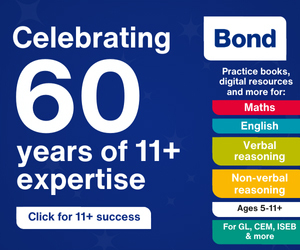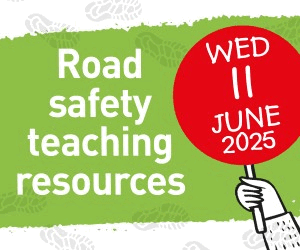Primary Times - the definitive what’s on and where to go family guide of activities and events for children of primary school age. Things to do with your kids during the school holidays including arts and craft activities, music and theatre for children, parties, competitions, days out, and family attractions along with term time drama schools, dance classes, after school clubs and sports activities. Things to do at a place near you!
5 Fantastic Father’s Day STEM Craft Activities
By Dr Thomas Bernard and Lisa Moss, QuestFriendz
One thing dads will always love on Father’s Day is something unique or personalised and handmade by their children.
Learning and developing children’s STEM skills has never been more crucial, particularly in this exciting but ever-developing world of science, technology, engineering and maths.
These 5 STEM Father’s Day activity ideas could make an extra special gift to treasure an provide a fantastic opportunity for children to develop their STEM skills, including problem-solving and critical thinking, which may become an opportunity to learn a new skill or technique or a chance to transfer knowledge and skills from a past project or experience.
1- Create a Code Breaker Card
Giving a card is a Father’s Day tradition, but why not write a message inside using a secret code?
You will need the following:
- A4 card
- Pens and pencils
- Decorations for the front of the card
Activity:
1- Learn about different codes and decide which one they want to use. It may be one already created, or they may want to create a new one. To create a code, sketch a grid on a piece of paper with a box for each letter of the alphabet, then underneath each letter, draw the symbol; they can refer back to this when writing the message.
2- Decide on the words in the message and write them using the code symbol linked to each letter inside the card. The message can be as long or short as they would like.
3- Decorate the front of the card with colours and pictures Dad loves.
4- Give him the card on Father’s Day morning, and watch him unscramble his message.
Not only are codes great fun, but they’re also excellent for STEM development. Creating and deciphering codes encourage children to notice patterns and spot mistakes; they must think logically and pay close attention to detail. Creating codes on paper is also a fantastic first step towards computer coding.
2- Handmade Coasters
If a morning coffee makes Dad happy, why not accompany it with a handmade coaster?
You will need the following:
- A selection of flowers and leaves
- A flower press or heavy books
- Paper towels
- Ruler
- Laminator sheets or transparent printing sheets
- Glue
- Washi tape
Activity:
1- Explain the process of flower pressing and what will happen to the flowers during the process.
2- Explore local gardens or woodlands for interesting flowers and leaves (where possible, choose ones that have already fallen, and leave the living ones for wildlife to enjoy.)
3- Lay them on a paper towel, and place them inside the flower press or between two heavy books. Leave them for a week if time permits.
4- Decide how big you would like the coaster to be. Measure and cut two squares of laminating pouch or transparent sheet.
5- Arrange the flowers and leaves on one of the squares. Add a small amount of glue to keep the flowers from moving around.
6- Then, carefully place the second square on top before using the decorative washi tape to seal the outsides.
This creative STEM activity is perfect for getting outdoors and considering the environment while also carefully considering the design process and outcome. The children must think strategically about the kinds of flowers and leaves that would work well and use mathematical processes to measure the squares to size.
3- Make Homemade Ice cream
June often means sun, so why not treat Dad to homemade ice cream or make some together?
You will need the following:
- Measuring spoons and cups
- Milk, half and half or whipping cream
- Salt
- Sugar
- Ice cubes
- 2 small ziplock plastic bags and 2 large (4.5l) zip-lock plastic bags
- Oven gloves and a tea towel.
- Timer
- Extra ingredients, such as chocolate chips, sprinkled and strawberries.
Activity:
1- In each small bag, measure half a cup of milk, one tablespoon of sugar and one-quarter teaspoon of vanilla extract. Seal both shut.
2- Add four cups of ice cubes and half a cup of salt to one of the large plastic bags.
3- Place one of the small, sealed bags into the larger one and seal.
4- Put on the oven gloves, and cover the large plastic bag with a tea towel. Shake for 5 minutes, checking the small bag periodically to notice the changes.
5- Repeat the process with the other large zip lock bag, although do not add salt this time.
6- Remove the smaller bags from the larger ones, observe the differences, and enjoy!
7- Now you can customise your ice cream by adding extras, such as chocolate chips, sprinkles or strawberries.
This STEM activity encourages chemistry understanding and supports their learning of changing states, freezing and chemical reactions. You can promote critical thinking and analysis by asking questions and encouraging children to consider what is happening, what might happen, and why. This activity also allows trial and error, allowing them to decide on the flavours and colours.
4- Make a desk tidy
Dads are often busy, so why not treat them to a desk tidy to keep everything in one place?
You will need the following:
- Paper and pencils
- A selection of small cardboard or plastic boxes and tubes.
- A ruler
- Scissors
- A selection of coloured or wrapping paper in Dad's favourite colours or design
- Glue or sellotape.
Activity:
1- Look at a range of desk tidy designs for inspiration and think about Dad’s things that need keeping tidy.
2- Use paper and pencils to draw the design, and consider what materials are needed.
3- Measure and cut the boxes and tubes to the correct size.
4- Cover each one with coloured paper or wrapping paper in Dad's favourite colour or design.
5- Use sellotape or glue to stick everything in place.
Planning and designing STEM activities encourage creativity and problem-solving because they need to develop and improve their ideas and design until everything works. This activity also uses mathematical and engineering skills to measure accurately to successfully build the structure.
5- Try a Lego Boat Challenge
A Lego challenge is always great fun, especially when the whole family can join in too.
You will need the following:
- Lego of various shapes and sizes
- Coins or beads
- A bucket or box
- Water
Activity:
1- Begin by discussing boats, show some pictures if you can, and decide what it will need and what to avoid- such as holes that will allow water in.
2- Set a timer; 5 minutes works well for everybody to delve into the Lego and create their vessel.
3- Take turns testing the boats. First, watch to see whether they float, then use coins or beads to test their strength. Whoever’s boat holds the most coins or beads wins the challenge.
This STEM activity encourages everyone to think logically and draw on their previous knowledge about water, boats, floating and sinking. They must think strategically about their designs and what will work best. After everybody has tested their vessel, you could encourage problem-solving to improve their boats and float better the second time.
Dr Thomas Bernard and Lisa Moss are founders of QuestFriendz and authors of the SuperQuesters series. Find out more about QuestFriendz and SuperQuesters series and find downloadable resources at: www.questfriendz.com





